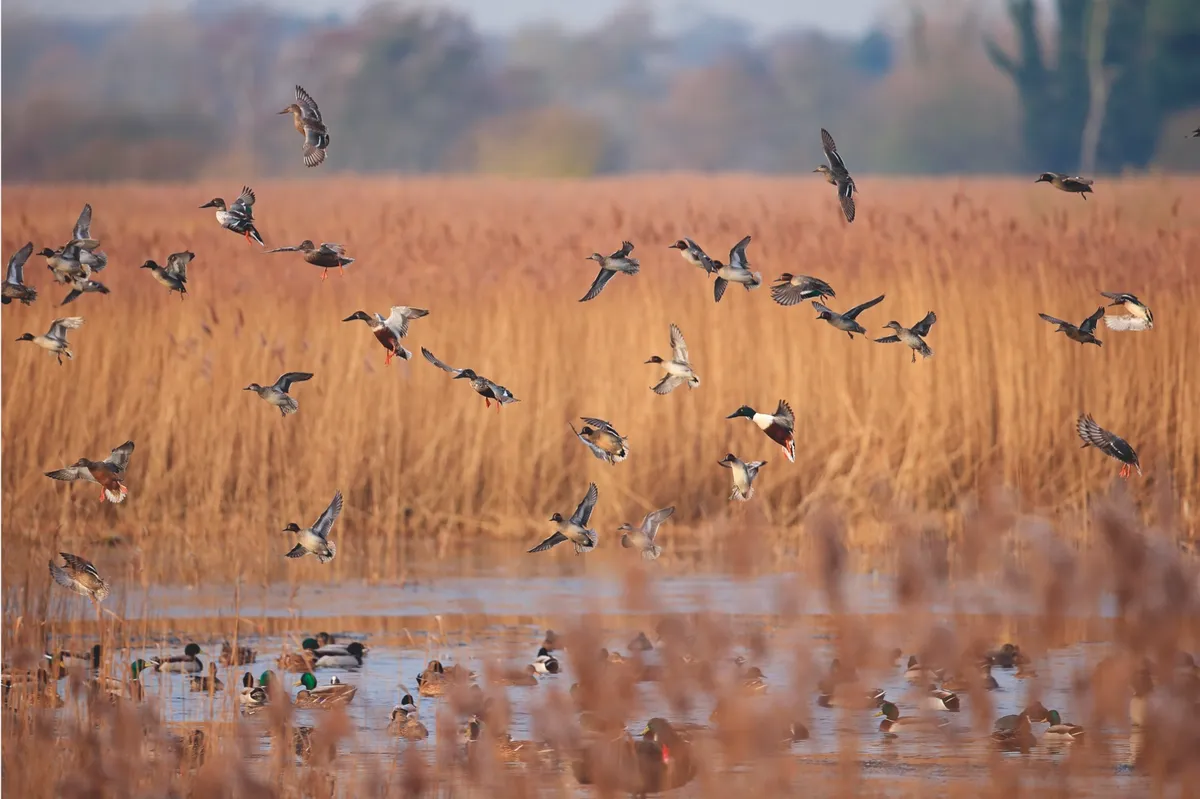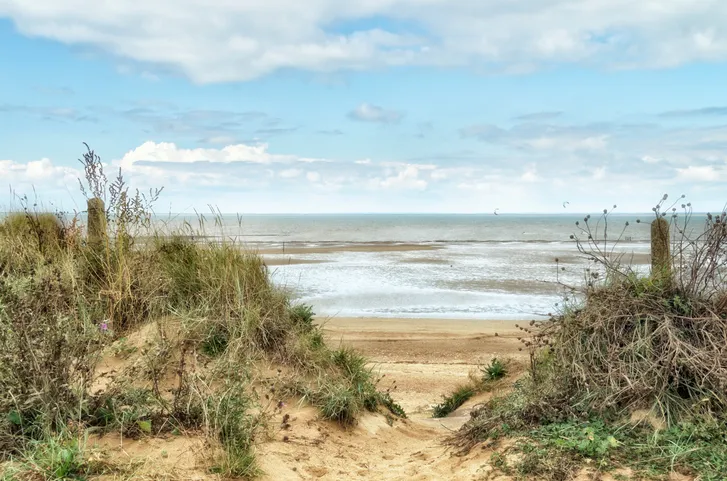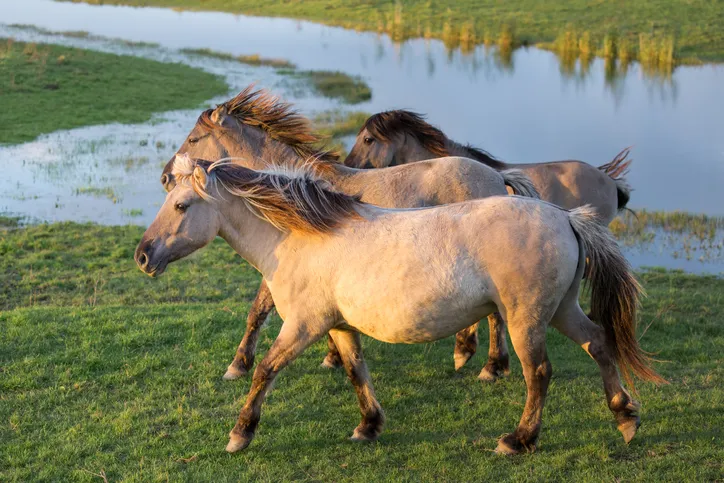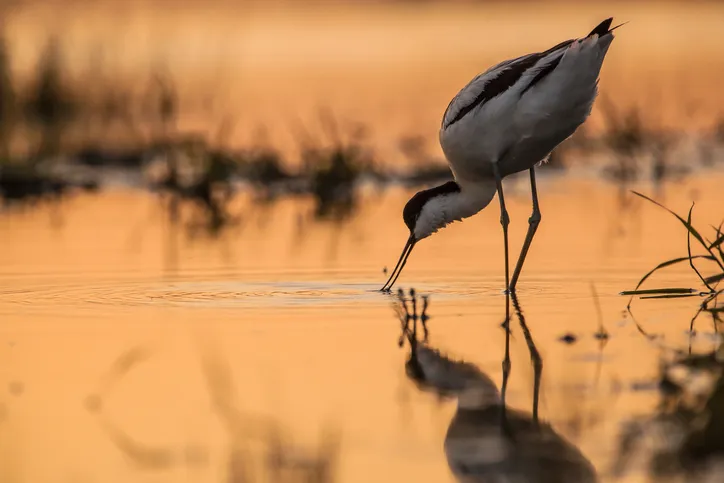Behind a line of tawny sand dunes and dark Scots pines is a place of rest for winter birds. Holme is a recuperative place for us, too.
The grand, unspoilt North Norfolk coast increasingly needs no introduction, yet Holme Dunes remains off the beaten track – or rather, at the bottom of a long, gravel road. At the point where the north coast turns west into The Wash, it feels like an island, an eroding corner of sand cut off from the mainland proper by an expanse of wet meadows.

This otherworldly coastal corner might have become a beach suburb like Skegness had developers not run out of money. And in spite of the bombs dumped upon its dunes during the Second World War, the coastline’s wild character remains thanks to the Norfolk Wildlife Trust, who acquired 526 acres in 1965.
Sensing the birds
I’ve been coming here since I was a boy, imbibing the muddy scent of saltmarsh mixed with pine tang and ocean spray.

With sea to the north and west, Holme is first landfall for wind-blown migrants, rarities and vagrants that shelter in the blue-grey sea buckthorn.
I always scan the telegraph wires beside the track, where kestrels, and occasionally something more exotic, perch. Drama erupts in the most mundane places; I once saw a heron wrestle an eel in the reed-edged waterway.
Breathing deeply
Most birders head to the landward side of the dunes – grazed in the winter by Konik wild horses. Wooden hides overlook scrapes of shallow water on the meadows, their surfaces swept by the bills of curlews and avocets.

But in the winter, the big visitors are ducks; hundreds of teal and widgeon. Then there are the raptors that hunt them – marsh harriers, peregrines and buzzards. I never tire of seeing barn owls quartering Holme’s meadows in late afternoon. On winter evenings, pink-footed and brent geese descend on the reserve.
I like to take the Norfolk Coast Path along the dunes and out on to the beach.This expanse of sand is often empty in winter, save the bar-tailed godwits, oystercatchers and dunlin that stalk the peat-beds exposed at low tide. Watching birds is an excuse to loiter, focus, slow down.

Holme is a sensitive site, so tread carefully, breathe deeply and don’t bring a dog. Your departure down the long track will be slower than your arrival, Holme’s peace and space filling you with deep calm, and a strange exhilaration, too.
Patrick Barkham’s latest book Islander explores Britain’s small islands (Granta, £20).

